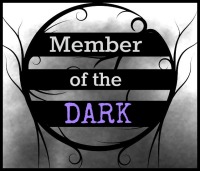
I’ve been seeing this phrase thrown around a lot over the last year. It’s gotten to the point where I’m not really sure what it means any more. Some people seem to use it in place of the phrase ‘plot twist’. Others talk about it taking a traditional plot point and turning it on its head. I think there’s another group that claims it’s when an author builds up to a certain event and then pulls a fast one at the last minute. Honestly, that last one sounds cruel and on the same level as ‘shock deaths’. So, what is subverting expectations and has it become the new fad?
To figure out a definition, we really only have to look at the pieces. Sure, there’s nuance depending on how you use it, but what is at the core? Well, expectations are what readers create as they follow a story. Most will begin to form their own predictions about what will happen, which comes with the building of tension. This can take the form of desiring current romantic pairings to simply praying that a character lives. It is something that we think or believe will happen. Subversion is when you undermine the authority of a system . . . In this case, it’s when you undermine the predictions. Whatever the reader thought would happen doesn’t take place and they are left with something they didn’t see coming, which really does sound like a plot twist. This can be done intentionally or by accident, but either way holds a risk.
I do think this literary device is getting overused a bit. A lot of movies and TV shows use the phrase in marketing. Reviewers praise or raze a work depending on how well the subversion comes off. Yet, you do have a challenge here, which might be why so many people are using it. Some readers will get the right prediction, so you can really only subvert a percentage of the audience. The only way to avoid that is to blatantly push for a specific point and then change it with barely any, or no, foreshadowing. It will get the audience to be surprised, but those who invested a lot of time into their predictions might not like the trick. Still, you see this getting used more and more, especially as our entertainment is flooded with remakes, reboots, sequels, and spin-offs. Subverting expectations is seen as the best way to keep things fresh.
The thing is that this runs into a Shaymalan problem. Remember when he became known solely as the director who does plot twists? Well, all of his following movies were watched with the plot twist expected, so they didn’t have the same impact. Even ‘Last Airbender’s’ plot twist of being more horrible than we imagined was . . . What do you mean that wasn’t a twist? Anyway, if everyone is subverting expectations then readers will begin to expect the subversion. Then, the only way to surprise them is by not subverting their expectations, but you can’t really do that when they’re only predicting the subversion of their prediction. So, they aren’t surprised when they’re subverted and I think my editor is currently on a plane to beat me with an Oxford dictionary.
Personally, I don’t think I will use this as much or at all. I will do plot twists that have clues throughout the work, but a sudden surprise that comes from nothing doesn’t appeal to me. Maybe I’ll change my mind down the road, but I really want to give the audience most of what they are expecting. The romances won’t always match up, but that’s a different issue. I think I’d cause more harm than good if I suddenly revealed that Clyde has been a werewolf throughout War of Nytefall or that Luke Callindor is really the reincarnation of Baron Kernaghan in Legends of Windemere. None of that makes any sense and they don’t even cover predictions. As you can see, I’m really bad at this.
I’ve heard people say that subverting expectations is an art. You really need to work hard on it and master the delivery. I can see this as being true, but I also see many doing it without thinking. This dilutes the water and those who are skilled get put in the same boat as the sloppy bandwagon jumpers. There’s a big difference between gracefully threading a needle to sew on a patch than stapling the thing while the person is still wearing the pair of pants. Hmmm, that analogy might not have worked. Not a good sign.
So, what does everyone else think of subverting expectations? Do you have any tips? Has it ever been attempted in a story you liked and made you walk away?





I heard that the Game of Thrones creators did this a lot. I can only say I heard about it, because I didn’t watch the show. I can’t imagine doing this every week, however. Shock value can wear thin.
Nowadays many authors are overturning familiar tropes.
Foreshadowing is a good tool even if a twist is coming. You have to be subtle though when you foreshadow the possibility that things might not be as they seem.
LikeLike
I was thinking of them and Rian. All three openly admitted to subversion being a main goal. It’s funny how an author will foreshadow and then freak out when a reader figures it out. That’s the point of the literary tool!
LikeLiked by 1 person
Totally agree. So what if viewers or readers figure things out. It’s one thing if viewers or readers complain about having done so (which says more about them than about the story). It’s another to try to pull one over on viewers/readers with the attitude of, “You’ll never figure this out.” I thought the fun of writing involved dropping breadcrumbs in a story so that the reader can try to figure things out and then have his or her guesses confirmed or refuted.
LikeLike
It is fun to follow those clues. The ‘ah-ha!’ people tend to focus so much on the surprise and misdirect that they forget the story. It can be really bad if it undermines a bunch of foreshadowing. Then, those old clues linger as confusing pieces that have no real purpose other than tricking the audience. That’s not good storytelling.
LikeLiked by 1 person
I feel like I need to make the obligatory mention The Last Jedi. For good or for ill, the director took all of the fan speculation and pretty much went in the opposite direction every time he could. Did it subvert expectations? Sure. Did it present a meaningful narrative? Not so much.
LikeLiked by 1 person
Wasn’t sure if that was obligatory. Does bring up a question though. How far do you go to subvert? If someone figures out the twist then you really shouldn’t set fire to everything. Bound to be at least one person who saw it coming.
LikeLike
Enjoyed the discussion. As a subverter, I have to say I enjoy doing it. Good post, Chares.
LikeLike
Thanks. How far do you go with your subversions? Must be easy to do in a single story or trilogy.
LikeLiked by 1 person
Not too far. Only want the reader to say to themselves.”I didn’t see that coming.”
LikeLike
I think there is a talent to it, and it scares me. I hope to get things right, fool a few people with clues that make sense when you finally see the end, but it’s not easy. I enjoy a story that can pull this off. Not everyone can, and not every story needs it.
LikeLike
Very well said. It takes a lot of skill. More than most of those doing it seek to have.
LikeLiked by 1 person
I’m dabbling with it, but very unsure of myself. Maybe I should watch a bunch of old Maverick television shows, and maybe The Sting again.
LikeLike
That could work.
LikeLiked by 1 person
I think I’m accidentally doing this with my mystery novel. My writer’s group are mostly in agreement that my POV character is an unreliable narrator and could possibly be the culprit. I haven’t introduced the bad guy yet – trying to find the right spot for him to come in. But I think I definitely need to figure that out… unless it’s a good thing people suspect my MC in book one and they truly learn about her in the end for the rest of the series? I have no idea.
LikeLike
Mystery stories can get away with this more. The goal is to throw the reader off with unreliable witnesses and fake paths. Not to the extent where the culprit is a character nobody has ever seen before like the late season CSI episodes used to do.
LikeLike
Right. It’s not like he’s revealed as the culprit when he’s introduced. It’s still gradual, just not until the middle of the story.
LikeLike
I agree that most readers begin to form a narrative as they go, and have expectations of what the outcome will be for certain characters and plot arcs. But I believe if the readers can predict outcomes, then the story will not hold their attention. It will be… predictable.
So when I subvert a plot or character, it isn’t just to arbitrarily jerk the readers around and “keep them guessing.” I want to deliver a surprise that is completely logical within the context of the story, yet reaches beyond the surface expectation.
As writers, we are creating an illusion of Real Life. And in Real Life, sure, people can be hit by random falling pianos. To me, that is where the risk lies. Subverting for its own sake will leave readers feeling jerked around. It may be ironic, but the reader is trusting us to be fair and just in a way that Real Life will never be.
LikeLike
There’s definitely an art to it. However, I think you’re overthinking twists 🙂 Most writing follows the same old 3-act rules that Aristotle first described. Doesn’t make it any less enjoyable for that! I think that twists are similar to that. It’s okay if people expect them, as long as they come naturally. Which is where the art thing comes in…
LikeLike
This is about more than twists. This is a current trend of stories doing a twist designed to undo publicly made expectations. Most times, this is done in contrast to foreshadowing and previous character behavior. The artist focuses more on surprising the audience than telling a good story. The finale for ‘Game of Thrones’ is an example. People have pointed out ignored foreshadowing and how many characters acted opposite of their development. Other things were rushed to the point where they didn’t really fit.
LikeLiked by 1 person
Ah, I see what you mean. So, you’re referring exclusively to when it all feels forced. In that case, I agree it should be avoided!
LikeLike
Yup. That’s why I was saying it’s an art. Too many think it’s easy.
LikeLiked by 1 person
My husband complained that all my blog stories have a plot twist, so I clearly am not able to write otherwise yet. 🙂 I saw it as my knowing a situation or story and slowly unveiling it to readers. They’re certainly not as drastic as subversion.
LikeLike
Twists are good. It’s when they are done solely to confuse and shock readers, so you don’t get a proper build up. I’ve seen this happen more often over the years.
LikeLiked by 1 person